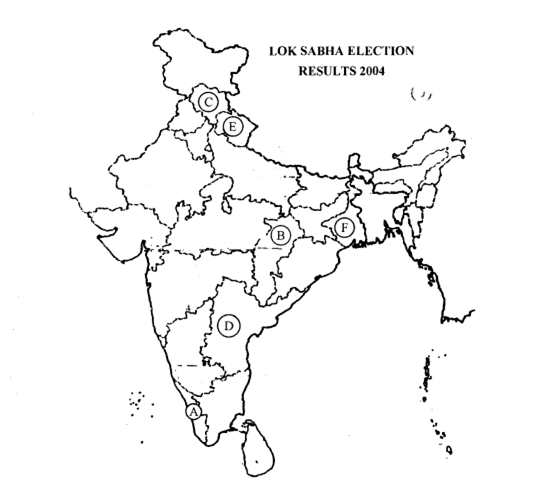 Long Answer Type
Long Answer TypeExplain any three constraints on the American power.
Or
The conflict of 1962, in which India suffered military reverses, had long-term implications for India-China relations. Diplomatic relations between the two countries were downgraded until 1976. Thereafter, relations the two countries began to improve slowly. After the change in China’s political leadership from the mid to late 1970s. China’s policy became more and more pragmatic and less ideological. So it was prepared to put off the settlement of contentious issues while improving relations with India. A series of talks to resolve the border issues were also initiated in 1981.
Study the paragraph given above carefully and answer the following question:
(i) Why did India suffer military reverses as a result of the conflict of 1962?
(ii) When did the relation between India and China Slowly improve ?
(iii) What was the change in the policy of China in the seventies?
(iv) Which efforts were made to resolve the border issue between India and China?
What is cold war? Why did the Super Powers depend on military alliances with smaller countries?
OR
Explain any six consequences of the disintegration of the Soviet Union.
The Cold War referred to the competition, the tensions and series of confrontations between the United States and Soviet Union, backed by their respective allies.
The Super Powers depend on military alliances with smaller countries because the smaller states were helpful for the superpowers in gaining access to:
(i) Vital resources such as oil or minerals
(ii) Territory, from where the superpowers could launch their weapons and troops.
(iii) Location from where they could spy on each other.
(iv) Economic support, in that many small allies together could to pay for military expenses.
OR
The consequences of the disintegration of the Soviet Union are:
(i) It meant the end of Cold War confrontations.
(ii) The ideological dispute over whether the socialist system would beat the capitalist system was not an issue any more.
(iii) Power relations in the world politics changed and, therefore, the relative influence of ideas and institutions also changed.
(iv) Politically, the notion of liberal democracy emerged as the best way to organise political life.
(v) The end of Soviet bloc meant the emergence of many new countries.
(vi) The central Asian countries wanted to take advantage of their geographical locations and continue their close ties with Russia and also to establish ties with the West, the US, China and others.
Evaluate any three factors that helped the congress to continue to dominate the Indian political scenario for almost three decades after independence.
OR
What was Green Revolution? Mention it’s any two positive and any two negative consequences.
Explain any six factors which led to the popularity of Indira Gandhi’s government in the Early 1970s.
OR
‘The 1977 elections for the first time saw the opposition coming to power at the centre’. Examine any six reasons for this change.
How have popular movements contributed to the expansion of democracy rather than causing disruption?
OR
In the given political outline map of India, six states have been labelled as A, B, C, D, E, and F, Keeping in mind, the Lok Sabha Election result of 2004 and with the help of the information provided below, Identify these states. Write their correct names in your answer book in the following tabular form:
| Name of coalition | Alphabet |
| Name of the State |
(i) Two states where the Left parties won the majority of Lok Sabha seats.
(ii) Two states where the NDA won the Majority of Lok Sabha seats.
(iii) Two states where the UPA won the majority of seats in Lok Sabha.
